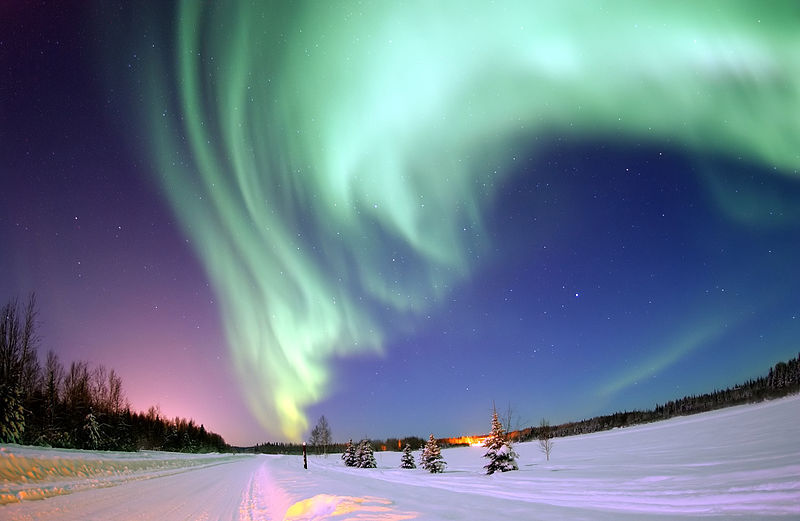Gas is the state of matter where particles tend to occupy all available space. In this state, the particles are very far apart, which means that the atoms or molecules are very loosely bound to each other.
The scientific study of gases gives us a better understanding of the world around us. Gases are omnipresent in our environment. For example, it is by knowing the chemical composition of the gases that make up the upper atmosphere that we have been able to explain the phenomenon of the aurora borealis. Meteorology, for its part, is closely linked to the development of knowledge about the movement of air masses in the atmosphere.
In addition to natural phenomena, the technological field has benefited greatly from the increase in our knowledge of the behaviour of gases. For example, aviation would not have developed to the extent it has without increased knowledge of atmospheric currents. The compressibility of gases has also enabled us to breathe underwater using compressed air tanks. Without realising it, our daily lives are constantly affected by phenomena linked to the behaviour of gases.
Examples of natural phenomena involving gases: a polar aurora involves the collision between solar wind particles and the upper atmosphere (left); and the Earth's atmosphere is composed of 21% oxygen and 78% nitrogen (right).
The chemical properties of gases make it possible to understand and analyse various reactions involving them.
Several chemical properties of gases allow us to identify them. For example, an incandescent firebrand reignites in the presence of oxygen (|O_{2}|), whereas hydrogen (|H_{2}|) explodes on contact with a flame. Based on these characteristic properties, it is possible to identify a gas or a group of gases in a chemical reaction. For example, a distinction can be made between combustible and oxidising gases.
There are a large number of natural phenomena that involve the chemical properties of gases. Methane (|CH_{4}|), for example, is produced during the bacterial fermentation of organic matter. Gases, whether of natural or anthropogenic origin, can have a major impact on the environmental balance. Studying the chemical properties of gases can also lead to the development of numerous technological applications. For example, the chemical reactivity of a gas, i.e. the way it reacts chemically under different conditions, will determine how it can be used.
Some gases can be combustible (like the propane used in the Bunsen burner on the left) or oxidising (like the halogens used in certain types of lighting on the right).



